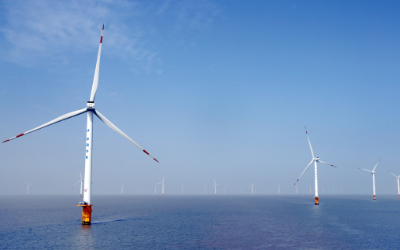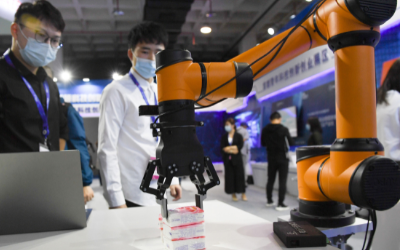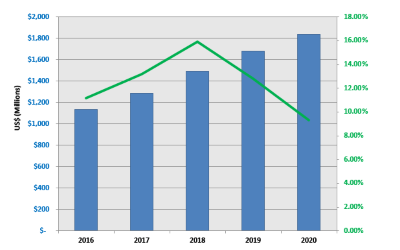Insufficient domestic demand major challenge for economy
As the resurgent COVID-19 pandemic that hit parts of China earlier this year increasingly comes under better control, economic recovery is gradually taking shape. But due to outbreak disruptions that continue to periodically appear, no signs of a sustained economic rebound were evident as of the end of June. Less-than-stellar data in consumption, investment and market confidence show that mild recovery rather than a robust rebound is more likely in the second half.
As the peak of outbreak disruptions recedes, policies regarding population flows and transportation have been adjusted accordingly. Recoveries in logistics, business activity and daily consumption have been quite noticeable.
In April, the purchasing managers' index for manufacturing and nonmanufacturing sectors withered to 47.4 and 41.9, respectively. However, the two indicators climbed to 49.6 and 47.8 in May and clawed back to expansionary territory one month later with readings of 50.2 and 54.7.
Recovery in economic activity seems to be quite strong based on the PMI data, especially in the nonmanufacturing sector. The two indicators in June approached levels seen in April 2019.
But the above increases were only inferred on a monthly basis. The data reported in May, still in contraction territory, showed that fundamental improvements are still absent. The rebound in June was mainly recovery based on comparisons to the drastic contraction during the previous two months.
It should also be noted that the PMI is a subjective indicator, comparable to the GDP growth rate, in order to arrive at a more unbiased and nuanced understanding. China's GDP growth rate in the second quarter came in at 0.4 percent, said the National Bureau of Statistics, which was much lower than the previous market consensus of a 1 to 1.5 percent estimate. This shows that PMI readings have overestimated economic recovery momentum.
The country's aggregate financing to the real economy totaled 2.8 trillion yuan ($414 billion) in May, up from 1.9 trillion yuan recorded during the same period last year. However, it should be noted that the significant year-on-year increase is mainly attributable to rising renminbi loans and government bonds, while other factors, such as personal short-term loans, remained flat or even reported declines.
Incremental renminbi loans in May jumped by 400 billion yuan year-on-year. But to further break the numbers down, it can be seen that the increase was mainly supported by rising bill financing and short-term loans. Mid- to long-term personal loans plummeted by 340 billion yuan in May on a yearly basis while mid- to long-term loans by enterprises fell by 100 billion yuan year-on-year.
All these reflect that personal financing and enterprise financing show a lack of confidence in overall growth. Therefore, the major challenge posed to China at present is not inflation, but rather stabilizing market confidence and expanding domestic demand.
The property sector is facing great pressure this year, while local government income from property revenue has also dropped significantly on a yearly basis.
But the good news is that the issuance of special local government bonds has largely increased. By the end of June, up to 90.8 percent of the special bonds scheduled to be issued this year have completed issuance. This is in sharp contrast to the situation last year, when only 50 percent of the quota was completed by August 2021.
The acceleration of special bond issuances has allowed fiscal policies to provide more support to the real economy.
As this year's task for special bond issuances has been almost completely accomplished, there are three possible solutions if the government chooses to further strengthen fiscal policy support for economic growth. They can either bring next year's special bond quota to the remaining months of this year, or increase this year's quota. A third solution is to issue special treasury bonds.
However, due to the frequent disruptions that contagion resurgences have brought to business activity, local governments' balance sheets are also highly stressed. Under such circumstances, it is as yet unknown to what extent special bonds can support fiscal expenditures of local governments, as these bonds are designed for unique purposes.
In general, special bonds can help local governments expand effective investment and stabilize economic growth. But due to strict management regulations, it may take longer for investment projects to be approved with bonds still on hand. A bond's coupon should still be paid even when projects await approval. This is a huge waste of resources. Therefore, local governments should have a bigger say in terms of capital disposal for such bonds.
In terms of monetary policies, China is quite capable of adopting policies based on its own needs and conditions. The US Federal Reserve is still in the tightening process, which will result in an inverted interest rate differential between the US and China. But China's relaxed monetary environment is conducive to stabilizing market expectations and facilitating growth. Positive results can be anticipated from the relaxed measures. The tightening policies in the US are mainly aimed at taming inflation by sacrificing employment and growth. The US financial market will be thus more volatile, which can already be seen by recent stock market performance.
Under such a comparison, it can be seen that China's easing will not result in capital outflow or depreciation in the renminbi exchange rate. Solid proof of this can be seen in the foreign exchange market. When China announced on May 20 that it would lower the five-year loan prime rate by 175 basis points, the renminbi appreciated against the US dollar that day and the next, beating market expectations.
It is true that inflation has risen in China recently and may exceed 3 percent in certain months later this year. But overall inflation expectations are still stable. The major challenge that China faces now is a lack of confidence and lackluster domestic demand. Therefore, macroeconomic policies should continue to focus on stabilizing growth.
The writer is a research fellow at the Institute of World Economics and Politics at the Chinese Academy of Social Sciences.
The views don't necessarily reflect those of China Daily.








